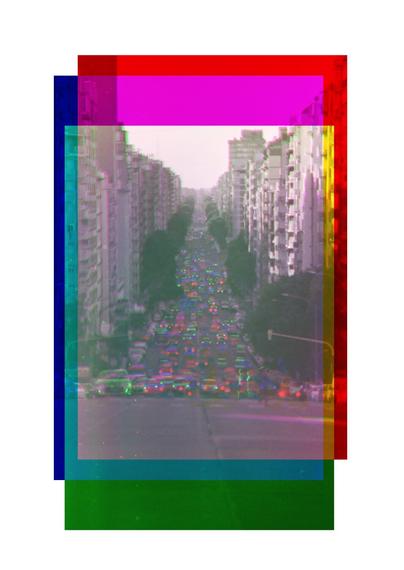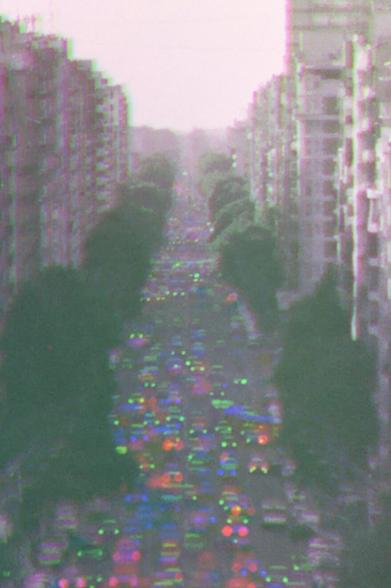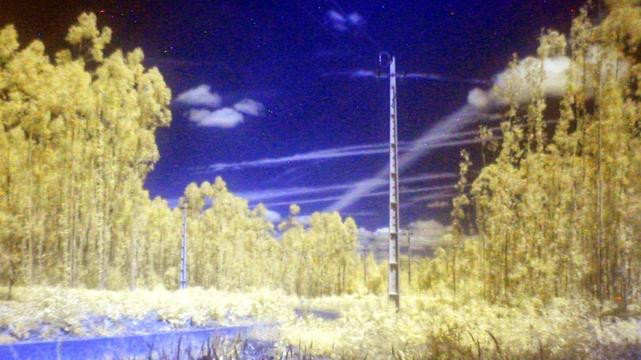#trichrome
I was going for Chad Hill and Andrew Keedle and brought back David Hockney instead. I thought I had the tripod locked down. Going to have to look at the head. Oh well. It’s interesting to post your failures. ONDU Eikan 4x5 Range, Ilford HP5+, Rodinal 1:50.
#BelieveInFilm #Trichrome
Maybe foma400? Ricoh KR-5
.
.
.
.
#photography #trichrome #ricoh #foma400
Der Hüsung in der Hufeisensiedlung in Berlin Britz.
#FotoMontag #PhotoMonday
📷 Pentax LX
🎞️ Ilford Delta 100
🧪 Wehner Entickler (a.k.a. Jobo Alpha)
🔬 Pentax K-01 and SMC M 100mm Macro
#BelieveInFilm #FilmPhotography #Pentax #BlackAndWhite
#Hufeisensiedlung #Britz #Berlin #Bildbesprechung #Darktable #trichrome
Holyrood Park #trichrome 5. St Anthony's Chapel on the hill again. Does it work for #FensterFreitag?
#Pentax ME, Vivitar Series 1 28mm f/2.8, red, green and blue filters, #Kentmere100, home dev in HC110 dilution B (1+31), home scanned, 3 frames combined in Affinity Photo..
Holyrood Park #trichrome 4. Swans, flowers and people. That weird coil is on one of the three negatives; in something so glitchy it seemed best to leave it!
#Pentax ME, Vivitar Series 1 28mm f/2.8, red, green and blue filters, #Kentmere100, home dev in HC110 dilution B (1+31), home scanned, 3 frames combined in Affinity Photo..
Holyrood Park #trichrome 3. Swans and flowers.
#Pentax ME, Vivitar Series 1 28mm f/2.8, red, green and blue filters, #Kentmere100, home dev in HC110 dilution B (1+31), home scanned, 3 frames combined in Affinity Photo..
Holyrood Park #trichrome 2. Arthur's Seat is the peak here.
#Pentax ME, Vivitar Series 1 28mm f/2.8, red, green and blue filters, #Kentmere100, home dev in HC110 dilution B (1+31), home scanned, 3 frames combined in Affinity Photo..
Holyrood #trichrome 1. With this film I really struggled to get natural colours where they should be, and the wind was maybe too strong to get subtle "glitches".
#Pentax ME, Vivitar Series 1 28mm f/2.8, red, green and blue filters, #Kentmere100, home dev in HC110 dilution B (1+31), home scanned, 3 frames combined in Affinity Photo..
Oooh, email this morning from PolyFilmLabs telling me my #Scala 50 reversal film has shipped on its way back to me! That's exciting.
I've 2 more B&W rolls to dev, and my #Trichrome roll to re-scan, so could be busy!
Re-scanning the Trichrome roll because I thought setting the scanner exposure for all three parts (RGB) would help. Given the different filter densities, it didn't. And next roll I need to find more interesting compositions, not just moving light!
I've now combined all the triples into #trichrome images with #AffinityPhoto, but most are a mess. The water and cloud areas are generally fine, but land areas which should be vibrant green and some grey rocks are mostly muddy khaki. There seemed to be large brightness differences between some of the frames. I think I'm going to have to re-scan the roll!
Digital trichrome with Rodenstock Ysaron 75mm in a leaf shutter adapted to a Olympus OM-D M10, using the lead shutter for making red/green/blue filtered exposures.
Stuttgart, Germany, July 2025
#trichrome #multipleexposures #doubleexposure #urbanphotography #abstract #experimentalphotography #abstractstreet #streetphotography #stuttgart #germany
Digital trichrome with Nikonos 35mm f2.5 lens adapted to Micro4/3
Stuttgart, Germany, July 2025
#stilllife #trichrome #abstract #abstractphotography #experimentalphotography #nikonos
@PsyChuan A few folk practise this #trichrome technique even today! I'm halfway through combining a roll taken recently. I love it because of the colour "glitches" due to the time between frames, as in photo 4. Those folk were impressively good at keeping still! [Edit for typos]
Lens-Artists Challenge #357: Into the Woods
This week it’s the turn of Egídio of Through Brazilian Eyes to host the Challenge, and his theme is ‘Into The Woods‘. He says, ‘I briefly mentioned the Japanese expression shinrin-yoku in a post about national forests … a concept that was developed in Japan in the 1980s as a form of natural therapy and stress relief, or immersing oneself in a forest atmosphere. It is a way to allow all your senses to experience nature mindfully.’ Egídio continues, ‘this week’s challenge is about how you [practise] ‘forest bathing’ in your corner of the world.
Regular readers of my blog may have noticed that the woods behind our house feature regularly in my blog posts. Whether it’s testing a new-to-me camera, or practising a new technique, or just going for a walk to relax or work off a heavy lunch, I’ll always head off for a ‘walk around the block’. For this Challenge, I’m taking one of my favourite cameras, the Olympus Camedia C-100 digital camera into the woods.
The Olympus Camedia C-100 is a 1.3-megapixel CCD sensor with a fixed-focus lens released by Olympus in 2001. It’s fully automatic, which means that you can make next to no changes to the image you are taking, like monochrome mode for my beloved aerochromes. It’s a ‘point-and-shoot’ camera, and the sliding lens cover means that I can’t fix a filter thread to the camera, so if I want to make trichromes or aerochromes then I have to hold filters over the front of the lens, and sometimes the surround of the filter, or my stubby fingers, get into the frame.
The unique feature of this camera is that the sensor is failing, and I reckon that it’s overexposing by around 10 stops. Without any filter the images are completely blown out, but I’ve found that with a cheap Neewer ND2-400 variable ND filter on its maximum setting the vastly overblown natural images are made much more legible. It’s still a little overexposed on bright sunny days, but in overcast weather or in shadow the results are quite ‘good’.
I took the Camedia C-100 on a walk around the block, along with a tripod and a collection of filters. My intention was to try to make some digital trichromes and aerochromes, with red, green, blue, and infrared filters, but looking at the images from the red filter I reckon that the sensor has deteriorated even further and it seems to be even more infrared-sensitive. This did actually have some benefits in that red/blue channel mixed images came out wonderfully, but the images are now full of artefacts. Of course, I’m perfectly happy with that, the more glitchy this camera becomes, the better.
Around the fields behind our house, the woods look as they used to, but now, the once thick eucalyptus woods have been cut down to make way for heavy duty power lines for the long-promised high speed rail line between Lisbon and Madrid. I can still derive a lot of pleasure from the woods that remain, but now I just have to walk a little further.
Themes for the Lens-Artists Challenge are posted each Saturday at 12:00 noon EST (which is 4pm, GMT) and anyone who wants to take part can post their images during the week. If you want to know more about the Challenge, details can be found here, and entries can be found on the WordPress reader using the tag ‘Lens-Artists’.
If you are on Mastodon, you can now follow this blog directly. Just go to Mastodon and follow the ‘Snapshot’ WordPress account at @keithdevereux.wordpress.com. All new posts will be automatically updated to your timeline.
#Abstract #Challenge #Digicam #Digitalcamera #Glitch #Glitchy #LensArtists #Sensor #Trees #Trichrome #InTheWoods #LensArtists
Well after significant head scratching, I managed to make a #trichrome in Affinity Photo 2. This time I think I understand what I was doing a bit better. It's not helped by the fact that my experience with dealing with layers in these tools is extremely close to zero! Anyway, I've got the first trichrome from a windy day at St Margaret's Loch in Edinburgh's Holyrood Park, on Kentmere 100 b&w film. I love these results!
Do any #FilmPhotography #BelieveInFilm makers of #trichrome know if PS #Elements will let me drop separate images (made with filters) into the R, G and B channels? I usually use #AffinityPhoto instead of PS, but the way of doing this in AP is SO convoluted it makes my head hurt. Every time I look at it and think, I just don't understand that! Not stumping up for full PS (where the process is relatively simple, I believe), but Elements might not be too bad if it can do it.
Digitaal trichrome with Nikonos 35mm f2.5 adapted to Micro 4/3.
Place Gutenberg, Strasbourg, France, July 2025
#trichrome #carousel #nightphotography #placegutenberg #strasbourg #france #urbanphotography #abstract
Lens Artists Challenge #353: Stormy
After several months of really, really miserable weather, this week, the skies cleared, the Sun came out, and it’s been absolutely fabulous. Which is a shame really, because Beth from Wandering Dawgs is hosting the Challenge for the first time (welcome, Beth), and her theme is … Stormy. ‘This week I’m challenging you to show us your stormy images,’ says Beth. ‘Think about stormy weather, stormy feelings, or maybe stormy situations.’
Truth be told, stormy feelings and situations don’t occur to me very often, so that leaves me with the weather. We do get some lovely stormy clouds around here, and although thunder and lightning was forecast last week, it never materialised. When we arrived in the Maldives last year, I expected lovely golden tropical sunsets, but instead we were greeted with the tail end of a series of tropical storms. The featured image is a slight intentional camera movement image of the sunset after one such storm.
Around here, stormy clouds can be quite monochrome in nature, but I do like to bring a little colour to my stormy scenes through the creation of trichromes. The trichrome technique has been around almost since the dawn of photography, and uses red, green, and blue coloured filters to produce three near-identical black and white images. When these images are combined in a photo editor like PhotoShop or GuIMP, the result is a colour image. I won’t go into the nitty gritty of making a trichrome, I posted my method here for anyone who is interested. It’s for the Gameboy but the principle is the same for film or digital.
Any movement between the frames means the images won’t completely line up, which results in multicoloured artefacts on the final image. What I like to do is deliberately encourage these artefacts in the movement of clouds. I’ll take the first image, with the red filter, then wait 30s or so and take the second image with the green filter, then 30s later take the final image with the blue filter. When the three images are combined, the results are rainbow coloured clouds as they move across the sky. It’s even more fun if you do it in infrared.
The last image on this post is quite a recent one for me. You might have noticed that I’ve tumbled way down the Rapid film format rabbit hole, and this image is a redscaled image of an electricity poles after the last series of storms to hit Portugal, before the weather cleared up. It was taken on the Bilora Radix, actually an Agfa Karat film camera from the early 1950s, the precursor of the Rapid film system of the 60s.
Themes for the Lens-Artists Challenge are posted each Saturday at 12:00 noon EST (which is 4pm, GMT) and anyone who wants to take part can post their images during the week. If you want to know more about the Challenge, details can be found here, and entries can be found on the WordPress reader using the tag ‘Lens-Artists’.
If you are on Mastodon, you can now follow this blog directly. Just go to Mastodon and follow the ‘Snapshot’ WordPress account at @keithdevereux.wordpress.com. All new posts will be automatically updated to your timeline.
#Challenge #Clouds #Experimental #Infrared #LensArtists #Stormy #Trichrome #LensArtists
Went out again today and finished my #trichrome roll at Dunsapie Loch. However this time I couldn't get the filter holder off... or, more correctly, the adapter ring that connects holder to lens. This evening I thought my pliers were winning, but it turned out I was unscrewing the front of the lens! Not sure how to proceed. Luckily it's a cheap #Vivitar28mm and I've even got a spare!
@apkeedle I don't have PS but do use AP. I've found the descriptions of mapping photos to colour channels from various old forum post, very complicated to follow. I 'm thinking of writing a thread for Talk Photography to try to get more folk doing #trichrome (from my VAST experience of, checks notes, 3 films). The mapping stage is the hardest to write, specially as I don't have PS. Planning to link to something for that.









